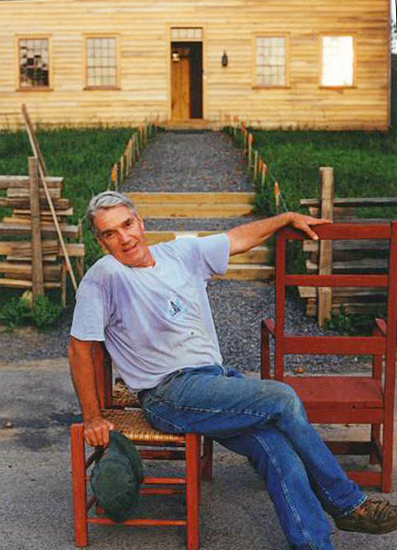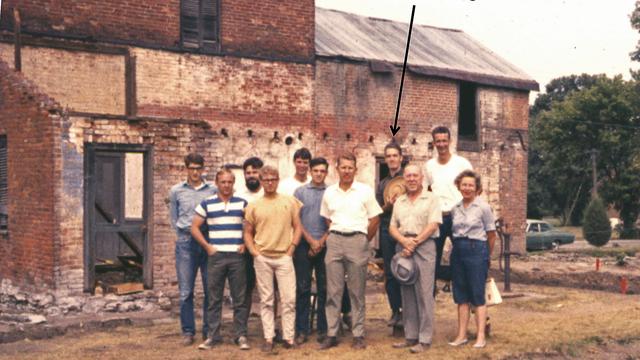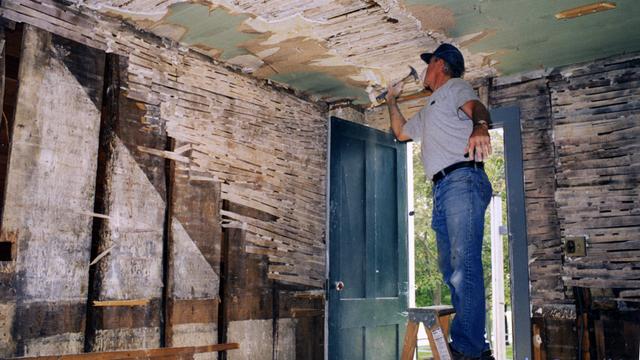The early history of The Church of Jesus Christ of Latter-day Saints spans a geographic distance of thousands of miles, all the way from England to the West Coast of the United States. Over the years, the Church has developed dozens of historic sites at or near locations where significant events in the history of the Church occurred. Exhibits and guides at each location tell the story of the Church and its people to thousands of visitors from around the world each year, encouraging a broader understanding of the time, the culture and the religious significance of each location.
- Gadfield Elm Chapel England
- Nauvoo Browning home
- Don Enders Browning home Nauvoo
- Smith Farm Restoration Log Home
- Smith Farm interior
- Smith Farm Restoration Don Enders
- Don Enders Smith Farm Frame Home
- The Sacred Grove
- Grandin building Palmyra
- Gadfield Elm interior
- Mormon Battalion Historical Site
- San Diego Mormon Battalion site
| Temple Square is always beautiful in the springtime. Gardeners work to prepare the ground for General Conference. © 2012 Intellectual Reserve, Inc. All rights reserved. | 1 / 2 |
“Historic sites emphasize the central places and events of [the history of Church] in locations such as the Joseph Smith Farm and the Sacred Grove in New York,” explains Jennifer Lund, director of Church history sites. “The sites also share examples of key gospel principles as they are expressed in the lives of Latter-day Saints.”
For members of the Church, the connection between history and religion is essential. From the earliest moments of the Church’s founding, Latter-day Saints have kept a record of their history. The principle behind this practice stems from a scriptural mandate: “There shall be a record kept among you” (D&C 21:1), intended for the “good of the church” and “the rising generations” (D&C 69:8).
Recently retired Church historian Don Enders played an integral part in re-creating Church history for modern-day observers. After 50 years of meticulous attention to detail in planning and executing the restoration of numerous Church historic sites, Enders was recently presented the Award of Merit from the Association of State and Local History.

Historian Don Enders helped to restore the Smith Frame Home
on the Joseph Smith Sr. Farm in Palmyra, New York.
Steven C. Olsen, a longtime associate of Enders in the Church History Department, says Enders’ attention to detail has helped the Church create “sermons for the eyes” at its historical sites. “His knowledge of material culture and the role it plays in fully restoring a Church historic site have been revolutionary.”
Enders’ long career parallels the Church’s development of many meaningful sites. Beginning in 1965 as a college student, he went to Nauvoo, Illinois, under the tutelage of renowned historian T. Edgar Lyon. “We traveled to Nauvoo together, over the back roads of our country,” Enders explains. “We talked all the way, about architectural details, geography, the landscape and the people. It was a legitimate field trip and an incredible learning experience for me, gathering hundreds of details as we crossed the country.”

Don Enders and a group of archeologists and students working on the Jonathan Browning home and gun shop in Nauvoo, Illinois, in 1968. Enders is identified by the black arrow.
The pair arrived in Nauvoo, Lyons working on historical restoration and Enders mowing lawns around the site during the day and taking history classes from the professor in the evening. As the master plan for the development of the Nauvoo site unfolded, Enders was an observer and then a participant, working under the “master historian” there until 1971.
Afterward, Enders worked for five years in the Church’s Family History Department, absorbing more and more historical detail. Combing through census, tax, probate and immigration records helped broaden his understanding of people, their surroundings and their travels.
When the Church established the Arts and Sites Division in 1977, Enders was invited to work full-time to develop significant historic locations. His efforts began with restoring the Deuel log cabin, one of the original 1847 dwellings in Salt Lake City. Enders has worked on many other projects since, including the Whitney Store in Kirtland, Ohio and the Smith Family Farm in Palmyra, New York.

Don Enders working on the restoration of the Smith Frame Home in Palmyra, New York.
Enders says extensive studies occur before the start of any restorative project. For example, the Church is currently working to determine probable locations for the homes shared by Joseph and Emma Smith in Harmony, Pennsylvania during the 1820s. Researchers will examine tax and real estate records as well as archaeological and photographic evidence before a site plan is accurately developed. “If you rush the research process, you have a lesser structure, and the detail is important,” Enders emphasized.
Part of the evidence historians need to develop a site will be found in existing structures.
“We work with local historians to cover the details in the time period; then we examine the present construction,” Enders said. “And regardless of condition, the building offers us clues. The type of glass, nails, moldings, construction methods or size of windows that were used, even saw marks in the wood, all are telltale signs of how a building is put together.”
Strict attention to detail is also key to telling the stories and sharing the gospel principles that occurred in a particular setting. The meticulous research, utilizing a wide variety of sources, reveals tales of personal commitment and spiritual growth, messages that resonate with and impact visitors today.
All of the Church’s historic sites are free and open to the public. Some sites are large and encompass multiple locations, such as Nauvoo, Illinois, or Palmyra, New York. Other sites are small, including just a statue or small building, such as the Gadfield Elm Chapel in England or the Mormon Battalion Historic Site in San Diego, California.
Find more information about Church historic sites in our Summer Travel Series.